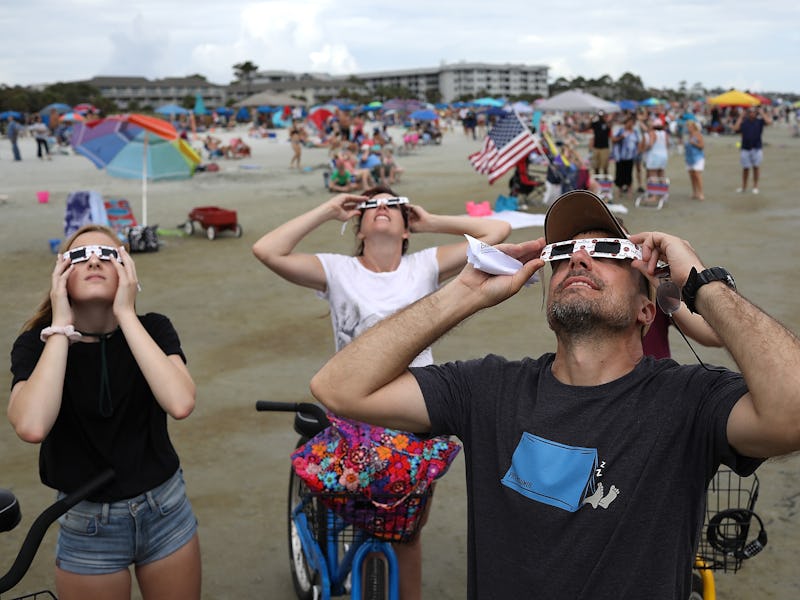How 15 American Cities and Towns Saw the Eclipse, in Photos
The total solar eclipse of 2017, in which Americans marveled and hopefully didn't blind themselves.

Americans came out in massive numbers across the country to take advantage of the United States’ first coast-to-coast total solar eclipse since 1918. People left work, stopped watching Netflix, and basically dropped everything for the spectacular event.
Nothing brings a country together like a celestial wonder. Check out these photos from all over the U.S., from big cities to national parks to rural towns:
In Horseshoe Bend, the biggest city in Idaho’s rural Boise County:
Horseshoe Bend.
St. Louis, Missouri, at a ‘Priceless Recess’ Eclipse Event at Northview Elementary School:
Students in the Jennings School District.
At the Winston-Salem Open in Winston Salem, North Carolina, where the game continued as usual even when the eclipse was at its maximum and covered 95 percent of the sun. If attendees keep their tickets from that game, they (or someone they pass it on to) will get free attendance to the next Winston-Salem solar eclipse in 2078.
At the Winston-Salem Open at Wake Forest University.
Nashville, Tennessee, during SiriusXM The Highway’s live broadcast of the eclipse at FGL House, where there were also music performances:
FGL House.
Isle of Palms, South Carolina, where there was apparently a great view of the totality despite cloudiness:
Isle of Palms.
Washington, D.C., where many went to the Lincoln Memorial and National Mall to watch the eclipse:
At the Lincoln Memorial.
Carbondale, Illinois, where a 15,000-seat stadium was sold out with eclipse spectators. The town had one of the longest totalities in the country, at 2 minutes and 38 seconds:
Saluki Stadium on the campus of Southern Illinois University.
Menan, Idaho, where the extinct volcano Menan Butte provided a 360-degree look at the eclipse:
Menan Butte.
On New York City’s “Top of the Rock” observatory atop Rockefeller Center, which looks out over the Empire State building, Central Park, and midtown Manhattan. It’s one of the most popular views in the city even on a normal day:
The 'Top of the Rock' observatory at Rockefeller Center.
At Hartwell Lake, which the U.S. Army Corps of Engineers built sixty years ago, on the Georgia-South Carolina border:
Hartwell Dam & Lake on the Georgia-South Carolina border.
At Grand Teton National Park in Jackson, Wyoming. The park expected the day of the eclipse to be the busiest in its history and set up many official viewing areas for visitors:
Grand Teton National Park.
At Hilton Head Island, South Carolina. Clouds hid the sun until the very last moment, when they parted and allowed visitors to see the moon perform the eclipse:
Hilton Head Island.
At the world’s largest HD television in Fort Worth, Texas, where hundreds showed up to watch a broadcast of the eclipse:
A broadcast of the eclipse on Big Hoss at Texas Motor Speedway.
At Miami, Florida’s Phillip and Patricia Frost Museum of Science, where an eclipse viewing gathering gave visitors free glasses and Dunkin’ Donuts and an expert astronomy team explained the science of the event:
By the Phillip and Patricia Frost Museum of Science.
On Oregon State University campus at Corvallis, Oregon, where a crowd of over 5,000 people gathered to watch:
Oregon State campus.
Americans got great views of the eclipse from the ground, but the luckiest observers may have been six astronauts who got to check it out from space.